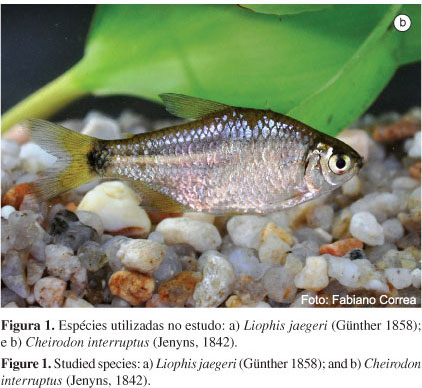Dietary composition is an essential component in niche dimension and interferes in the community structuring process. The needs related to feeding behavior drives the way species use their habitats. Despite the wide geographical distribution of Liophis jaegeri, studies concerning its general biology and feeding behavior are very scarce. The available information indicates that L. jaegeri is associated to humid or flooded habits, however the importance of aquatic preys in their diet has not received much attention. In general, the available information suggests that the presence of tadpoles and fishes in the digestive tract of dissected snakes are the result of incidental ingestion. In the present study, we present information on the ability of L. jaegeri to forage in aquatic habitats. Using video recordings made in captivity, we observed that snakes were able to detect, subdue and ingest efficiently the sympatric fish Cheirodon interruptus. These observations suggest that the importance of aquatic preys is higher than previously reported in the literature. Therefore, we believe that the existence of water bodies and the availability of aquatic preys play important roles in the habitat suitability for L. jaegeri snakes.
predation; snakes; behavior; Cheirodon



